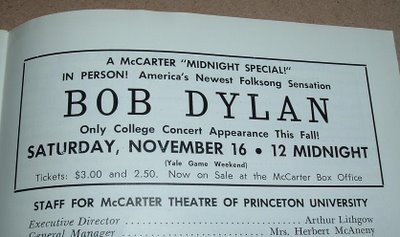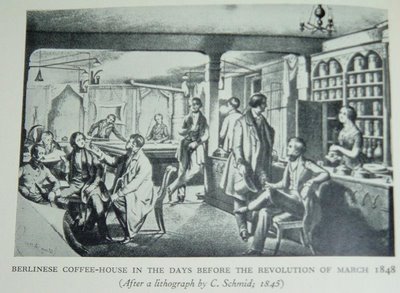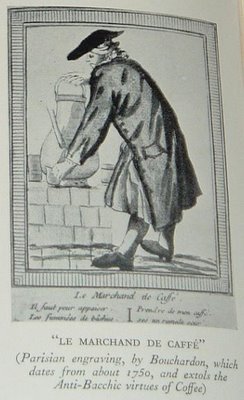
In 1806, two-hundred years ago this month, a Bavarian bookseller named Johann Palm became a martyr for the German struggle for liberty against French occupation under Napoleon. Before the century would end, Palm’s life and death would exert influence on another powerful military dictator, one of the most reviled in history—Hitler.
While poring over a recently acquired lot of books, I came across a copy of
History of the German Struggle for Liberty, Vol. I 1806-1812, by Poultney Bigelow; Harper & Brothers, New York, 1903, illustrated with drawings by R. Caton Woodville.
Looking through the first several pages for publication information, I was captivated by Mr. Woodville’s frontispiece illustration of Johannes Palm, a German bookseller about to be executed by a French firing squad. I wondered what role, if any, books or bookselling played in creating such a terrifying conclusion to this man’s life.
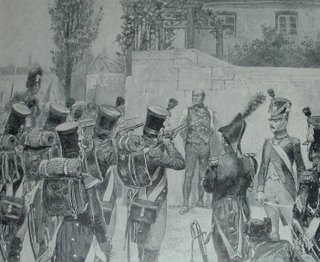
I searched the Internet for whatever scraps of information I could find on this obscure bookseller. What I was able to piece together revealed a bookselling crime worthy of an influential footnote not only in the world of books and Bavarian history, but also in the ambitions of two historically significant military figures, spanning the Napoleonic Era to World War II.
Johann Palm’s crime? Depending on which source you consult, he either published or distributed (or both) copies of a pamphlet titled,
Deutschland in seiner tiefen Erniedrigung (Germany in Her Deep Humiliation), deemed seditious by Napoleon because of anti-French content. Some accounts have even speculated that Palm authored the tract, but presumably the writer was Philipp Christian Yelin of Ansbach. At any rate, once discovered, the pamphlets, which denounced Napoleon and the French occupation, were traced back to Palm and he was arrested.
Johann Palm had apprenticed with his uncle, the publisher Johann Jakob Palm. Afterward, he met and married the daughter of a Nuremberg bookseller by the name of Stein. Palm eventually took over the business after his father-in-law died. It was from Stein that a package with the offending material was delivered to another bookselling firm (Stage) in the town of Augsburg.
One account states that Palm was so sure of his innocence that he refused to flee and avoid arrest. Another account has him hiding in Austria and in receipt of a damning letter that implicates his guilt. An associate wrote to him, as the authorities were searching for him, and indicated they could always use the excuse that they didn’t know what was in the packages—that they were merely the courier in a transaction between two parties.
Hitler adopted another version of the story, which cast Palm in a more patriotic, rebellious posture, which he wrote about in
Mein Kampf: “At the time of our Fatherland’s deepest humiliation, a bookseller, Johannes Palm, uncompromising nationalist and enemy of the French, was put to death here because he had the misfortune to have loved Germany well. He obstinately refused to disclose the names of his associates, or rather the principals who were chiefly responsible for the affair.”
Whether innocent or guilty, or guilty by association; whether he fled and returned, or never fled, he was eventually arrested as the evidence piled up against him. Under Napoleon’s orders, Palm was garrisoned in Braunau-on-the-Inn, Austria, and brought to trial on August 22, where he was tried and convicted of treason with four other booksellers. Those other four were extended mercy and set free at the request of King Maximilian I, but Palm was not so lucky.
The citizens of Braunau reacted with surprise and even pleaded for Palm’s release. Palm may have even assumed he was about to be set free also as the guards came to get him on August 26th, 1806, but he was taken to a field outside of town, bound, and fired upon by the French execution squad. Reportedly, he survived the first round of shots. Though knocked down, he struggled to stand again and was fired upon a second time. Unbelievably, this second round did not kill him either, though he was gravely wounded. This time, soldiers stepped forward to finish him off with a shot to the head.
The townsfolk who had pleaded mercy for Palm saw fit to erect a monument to the bookseller from Nuremberg on or near the site of his execution. This is the monument that made such a deep and lasting impression on a young Adolph Hitler, who grew up in the town where Palm had been executed.
A flood of cartoons and pamphlets deriding Napoleon and the French troops appeared in the wake of Palm’s death. A strong wave of patriotic fervor developed, enabling the Prussian King to leverage Palm’s execution for going to war against Napoleon. Though more significant reasons already existed, it was Palm’s execution that created a moral outcry and fueled rising public opinion against Napoleon and French occupation.
One hundred years later, the event was still etched deeply enough into the country’s consciousness that patriotic meetings throughout Bavaria observed the centennial of Palm’s death. And two-hundred years later, this month, the event will be observed again in Braunau as Johann Palm is the focus of an annual history symposium called Braunau Contemporary History Days.
All this fascinating history and its significant influence on world events for more than a century made itself known to me as I casually thumbed through an obscure volume of a history I had no interest in other than gleaning publication data to use in cataloging and pricing for my online store inventory.
So you never know what you might dig up between the covers, either in the content of the pages or laid in loose between the pages. I have documented other interesting finds in an electronic journal, and I suppose they will eventually find their way here, but it was my discovery of the long-dead and all-but-forgotten bookseller from Nuremberg that inspired the idea for
Archaeolibris and using this forum for sharing interesting finds such as this. You might say that Palm’s influence, albeit grossly diluted from the examples in the opening paragraph, lives on in some form.

 But just how far had women come? A long way when you consider the content found in A Manual of Elementary Law, by Walter Denton Smith (Instructor, Law Department University of Michigan), West Publishing Co., St, Paul, Minn., 1894.
But just how far had women come? A long way when you consider the content found in A Manual of Elementary Law, by Walter Denton Smith (Instructor, Law Department University of Michigan), West Publishing Co., St, Paul, Minn., 1894. 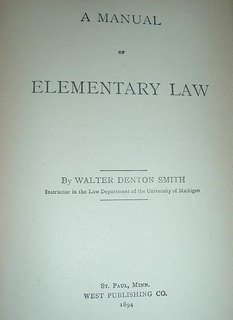 The next paragraph contrasts the archaic with the then modern or current enlightenment:
The next paragraph contrasts the archaic with the then modern or current enlightenment: 




